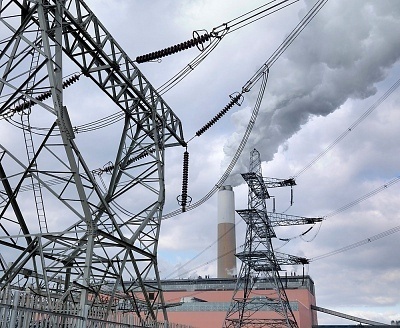How Does a Coal Power Plant Work?
One of the oldest ways in which humans have created electricity is via coal energy conversion. The fundamental reason for this is that coal is an easy resource to find and the process for converting coal to electricity is a straight forward one. However, environmentalists have discouraged coal energy conversion in recent years because of its contribution to green house gases and the possibility that it could contribute to global warming. However, a coal power plant can create considerable energy, which is why there are still advocates for coal power plants.
can create considerable energy, which is why there are still advocates for coal power plants.
How a Coal Power Plant Creates Electricity
In a nutshell, a coal power plant functions by burning coal to create steam, which turns turbines, thereby generating electricity. However, it takes much more than this to get the amount of energy that these power plants hope to yield.
The first step is to send 2cm coal pieces to a pulverizer where they are further smashed into dust. This increases the amount of surface area to boil, which creates more steam.The dust is mixed with air and then sent into a furnace or boiler where it is combusted.
Burning the air and coal mixture generates tremendous heat. Purified water is pumped through tubes that go through the furnace. The high heat levels turn the water into steam. This steam leaves the boiler and enters a turbine. Within the turbine are thousands of blades that spin as the steam hits them, thereby creating electricity.

When the steam turns the turbine, it is sent back toward the boiler where it is reheated. This is a closed loop system that allows the same water to be used time and again for the same project.
There are two loops in some coal plants. The boiler heats the first loop, then that hot water heats the water that turns the turbine. In other words, the boiler never touches the water that the turbine touches and vice versa.
How Electricity is Transferred from the Power Plant to Consumers
Now that there are electric currents, the transformers turn them into currents with a higher voltage that can be passed through wires. As they get closer to the consumer, these currents are broken up into smaller ones so that they can flow with ease into the consumer’s home or business. Voltage continues to be reduced so that the house’s electrical system can handle the flow of electricity.
Disadvantages of Coal Power Plants
Environmentalists have many concerns about coal power plants. Such plants release carbon dioxide, methane, and nitrogen into the atmosphere. This, it is theorized, contributes to global warming. Also, lake/river water is typically used to cool the purified water down so it can be reused in the process. The lake/river water is heated up as it cools the purified water, then released back into the lake/river. It has been argued that putting such a tremendous amount of hot water back into the lake/river causes plants and animals in it to die.


Comments - No Responses to “How Does a Coal Power Plant Work?”
Sorry but comments are closed at this time.